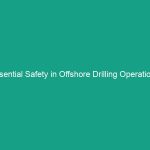Introduction
Good morning team! Today, we’re diving into an essential topic that impacts our daily operations and overall Safety: Essential Safety Signage Guidelines: Avoid Common Mistakes Today!. Safety signage is our first line of defense in preventing accidents and ensuring a safe work Environment. It’s crucial that we understand how to effectively utilize signage to minimize risks and enhance safety awareness. Let’s explore why this topic is important and how it affects each of you in your daily tasks.
Understanding Essential Safety Signage Guidelines
Safety signage refers to the various visual aids we use to communicate important safety information in the workplace. These signs can include warnings, instructions, and mandatory guidelines that help us navigate Hazards effectively. The importance of these guidelines cannot be overstated; they not only help prevent accidents but also ensure compliance with safety Regulations.
One common misconception is that safety signs are merely decorative; however, they play a vital role in conveying crucial safety information quickly and effectively. Ignoring the importance of proper signage can lead to dangerous situations that might have been easily avoided.
Key Hazards, Risks, and Safety Considerations
When it comes to safety signage, several hazards and risks can arise if guidelines are not followed properly:
- Inadequate Communication: Signs that are poorly placed, obscured, or unclear can lead to misunderstandings and accidents.
- Non-compliance: Failing to adhere to OSHA or local safety regulations regarding signage can result in penalties and increased liability.
- Neglecting Updates: Outdated signs can misinform employees about current hazards or safety Procedures.
Real-world consequences of ignoring these safety protocols can range from minor injuries to severe accidents, highlighting the critical need for effective safety signage.
Best Practices, Procedures, & Actionable Advice
Here are some Best Practices to ensure our safety signage is effective:
- Clear and Concise Messaging: Use simple language and symbols that are easily understood. Avoid jargon that may confuse employees.
- Proper Placement: Ensure signs are placed at eye level and in locations where they will be most effective. Consider high-traffic areas and locations near potential hazards.
- Regular Inspections: Schedule routine checks to ensure all signage is visible, legible, and in good condition. Replace any signs that are damaged or faded.
- Use of Color and Symbols: Use standardized colors and symbols to convey messages quickly. For instance, red typically indicates danger, while green signals safety.
For example, a construction site may use bright yellow signs to indicate caution in areas where heavy machinery is operating. This clear visual cue alerts employees and visitors to stay vigilant.
Regulations, Standards, and Compliance
Compliance with safety regulations is crucial to maintaining a safe work environment. The Occupational Safety and Health Administration (osha) has specific requirements regarding safety signage in the workplace. Understanding these regulations not only protects employees but also safeguards the company from liability.
Key Standards include:
- ANSI Z535: This standard provides guidelines for the design and use of safety signs and colors.
- OSHA’s regulations on safety signs (29 CFR 1910.145) outline requirements for signs related to health and safety hazards.
Adhering to these guidelines is critical; they are designed to protect our workforce and ensure a culture of safety. Non-compliance can lead to serious legal and financial repercussions.
Employee Engagement & Discussion
Now, I’d like to hear from you. What safety challenges have you encountered related to signage? Have you ever felt unsure about the meaning of a specific sign? Let’s discuss how we can improve our safety signage and better communicate risks in our workplace.
Your input is invaluable, and together, we can enhance our safety practices and create a safer environment for everyone.
Conclusion & Key Takeaways
In conclusion, effective safety signage is crucial in preventing workplace accidents and ensuring compliance with safety regulations. Remember these key points:
- Use clear and concise messaging.
- Place signs strategically for maximum visibility.
- Regularly inspect and maintain signage.
- Understand and comply with relevant safety regulations.
Let’s prioritize safety and take these guidelines to heart. Thank you for your commitment to maintaining a safe workplace. Your vigilance and adherence to safety practices can make a significant difference in our environment!


